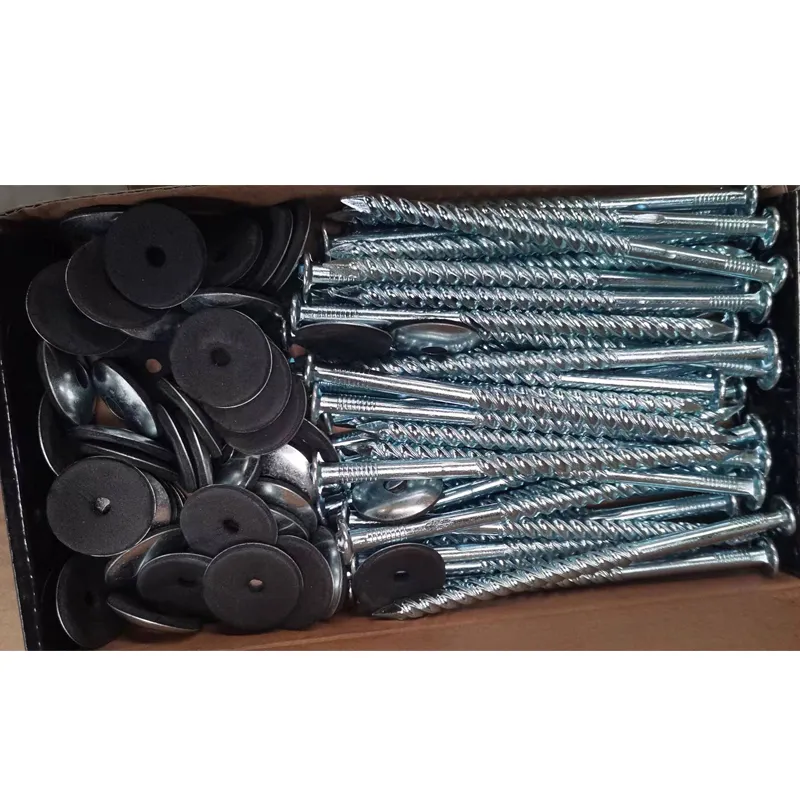dec . 16, 2024 00:59 Back to list
common wire nail
The Common Wire Nail An Essential Fastener in Construction and Beyond
The common wire nail is a seemingly simple yet fundamentally important fastener in both construction and various household applications. This small metal pin, typically made of steel, has been a staple in the toolkit of builders, carpenters, and DIY enthusiasts for centuries. Although it may appear trivial, its role in the structural integrity and functionality of various projects cannot be overstated.
Historical Background
The use of nails dates back to ancient civilizations. The earliest nails were made of wrought iron and used in Egyptian furniture around 4,000 years ago. Over time, as woodworking techniques evolved, so did the design and manufacturing of nails. The common wire nail, as we know it today, began to emerge in the 19th century, thanks to the advent of wire drawing technology that allowed for the efficient production of long, slender metal pins. This innovation made the common wire nail not only more affordable but also more accessible to the general public.
Design and Specifications
Common wire nails are characterized by their cylindrical shape, sharply pointed tip, and flat head. They are typically classified by their diameter and length, with sizes ranging from 2D (2-penny, about 1 inch long) to 16D (16-penny, about 3.5 inches long) or more. The diameter of the nail is crucial for determining its strength and grip; thicker nails can support heavier loads and provide better holding power.
These nails are often finished with a coating to enhance their durability. Galvanization, for instance, protects against rust, making them suitable for outdoor applications. In contrast, common nails intended for indoor use may have a smooth finish, allowing for easy driving into wood without splitting it.
Applications
common wire nail

The versatility of common wire nails makes them indispensable across various applications. In construction, they are often employed in framing, roofing, and siding, as they can quickly fasten wooden components together. Common wire nails are also used in woodworking projects, such as furniture assembly and cabinetry, providing a strong bond that can withstand everyday use.
Beyond construction, common wire nails find their place in many household repairs and DIY crafts. From hanging pictures to building simple structures like birdhouses, their ease of use appeals to hobbyists and homeowners alike. The availability of assorted sizes allows for tailored applications, ensuring that there is a nail suitable for virtually any task.
Pros and Cons
Like any product, common wire nails have their advantages and disadvantages. On the positive side, they are incredibly cost-effective, easy to find, and straightforward to use. Their design allows for quick assembly without the need for special tools, which contributes to their widespread application.
However, they do come with limitations. For example, while they provide a good hold, they may not be the best choice for applications requiring high shear strength or resistance to withdrawal forces. In such cases, screws or specialized fasteners may be more appropriate.
Conclusion
In conclusion, the common wire nail is a critical component in the world of construction and DIY projects. Its simplicity and effectiveness have stood the test of time, making it a go-to fastener for many trades and hobbies. As technology progresses and materials evolve, the basic design of the common wire nail remains relevant—demonstrating that sometimes, the simplest solutions are the most effective. With its rich history and essential role in countless applications, the common wire nail continues to hold its place as a cornerstone of modern construction and home improvement.
-
The Role of Field Wire Fence in Grassland Conservation
NewsJul.15,2025
-
Stainless Steel Razor Wire Durability in Coastal Environments
NewsJul.15,2025
-
Enhancing Home Security with Mesh Fences
NewsJul.15,2025
-
Diamond Mesh Wire for Small Animal Enclosures
NewsJul.15,2025
-
Common Wire Nail Tensile Strength Testing for Woodworking
NewsJul.15,2025
-
Barbed Wire Corrosion Resistance Galvanization Techniques
NewsJul.15,2025









